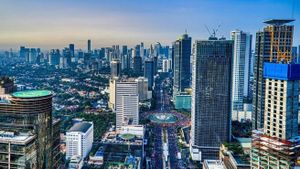Across Southeast Asia, diabetes stands as one of the most pressing health challenges, impacting millions and leading to considerable mortality. A recent study highlights alarming statistics: 7 of 10 Filipinos with diabetes are not receiving any treatment, leading to this chronic disease becoming one of the nation's top killers. With 8.6 million diagnosed diabetics as of 2022, the Philippines ranked 94th globally and stands as the sixth highest in the region.
The study, published by the esteemed Lancet Journal, offers the first comprehensive global analysis of diabetes rates and treatment over the past 30 years. Conducted by the NCD Risk Factor Collaboration and the World Health Organization (WHO), the report paints a troubling picture: over half of the world's 828 million individuals living with either type 1 or type 2 diabetes are without any form of treatment. This is roughly four times the number of untreated diabetics compared to 1990.
Specifically, the Philippines recorded 42,314 diabetes-related deaths in 2022, representing 6.3% of all fatalities, making diabetes the fourth-leading cause of death within the country. While other regions, particularly Central and Western Europe, have significantly improved their diabetes treatment rates, the Philippines continues to lag, landing at 135th out of the 200 countries evaluated.
Countries like Japan and several western European nations exhibit the lowest diabetes rates, thanks to their effective healthcare systems. Unfortunately, regions like the Caribbean and North Africa grapple with diabetes rates exceeding 25% of the population. Senior researcher Professor Majid Ezzati from Imperial College London has voiced concerns over the widening gap between nations and stresses the dire situation faced particularly by younger populations in low-income countries, who are at risk of lifelong complications without adequate treatment.
By adopting the Colombo Call to Action, health officials gather to address the growing diabetes burden throughout the WHO South-East Asia Region. This initiative focuses on collaborative commitments to significantly boost diabetes treatment and prevention efforts. Notably, over 482,000 diabetes-related deaths occur annually within this region, with complications from the disease, such as heart attacks, strokes, and amputation, latching on to economic consequences for families and health systems.
At the heart of this initiative, more than 100 experts converged for the Regional Commemoration of World Diabetes Day in Colombo, Sri Lanka. WHO's Regional Director, Saima Wazed, emphasized, "Bridging the service gaps to guarantee timely access to diabetes care can save lives. Care services must be equitable, comprehensive, accessible, and affordable." Hailing the commitment from the Sri Lankan government to combat diabetes, Deputy Minister of Health and Media Hansaka Wijemuni expressed their determination to forge stronger partnerships for effective health promotion and continuous quality medicine supply.
Emerging research suggests promising developments with GLP-1 receptor agonists, drugs initially aimed at managing diabetes but now showing potential kidney protective qualities regardless of diabetes status. A recent meta-analysis involving over 85,000 participants, including those with and without diabetes, demonstrated significant benefits from these medications. Lead investigator Professor Sunil Badve indicated the potential impact of these drugs on chronic kidney disease, which affects roughly one out of ten individuals globally.
This research, previously confined to investigational settings, lays the groundwork for advocating routine use of GLP-1 receptor agonists for managing not only blood sugar levels but also safeguarding kidney function. These findings contribute to the broader narrative of addressing diabetes and its complications, which continue to severely affect quality of life and lead to premature death.
Across Southeast Asia, the prevalence and impact of diabetes necessitate actionable strategies and collaborative effort across government, health systems, and communities. There is hope, but it heavily relies on effective policies, resource availability, and public awareness. With initiatives like the Colombo Call to Action and advances like GLP-1 receptor agonists, there’s potential for improvement, but significant challenges remain to be addressed.
Countries must unite to develop infrastructure for comprehensive care, ensuring equitable, affordable access to treatment and other necessary healthcare services. The struggle against diabetes is not just about managing the disease; it's about safeguarding the health, livelihoods, and futures of millions.



